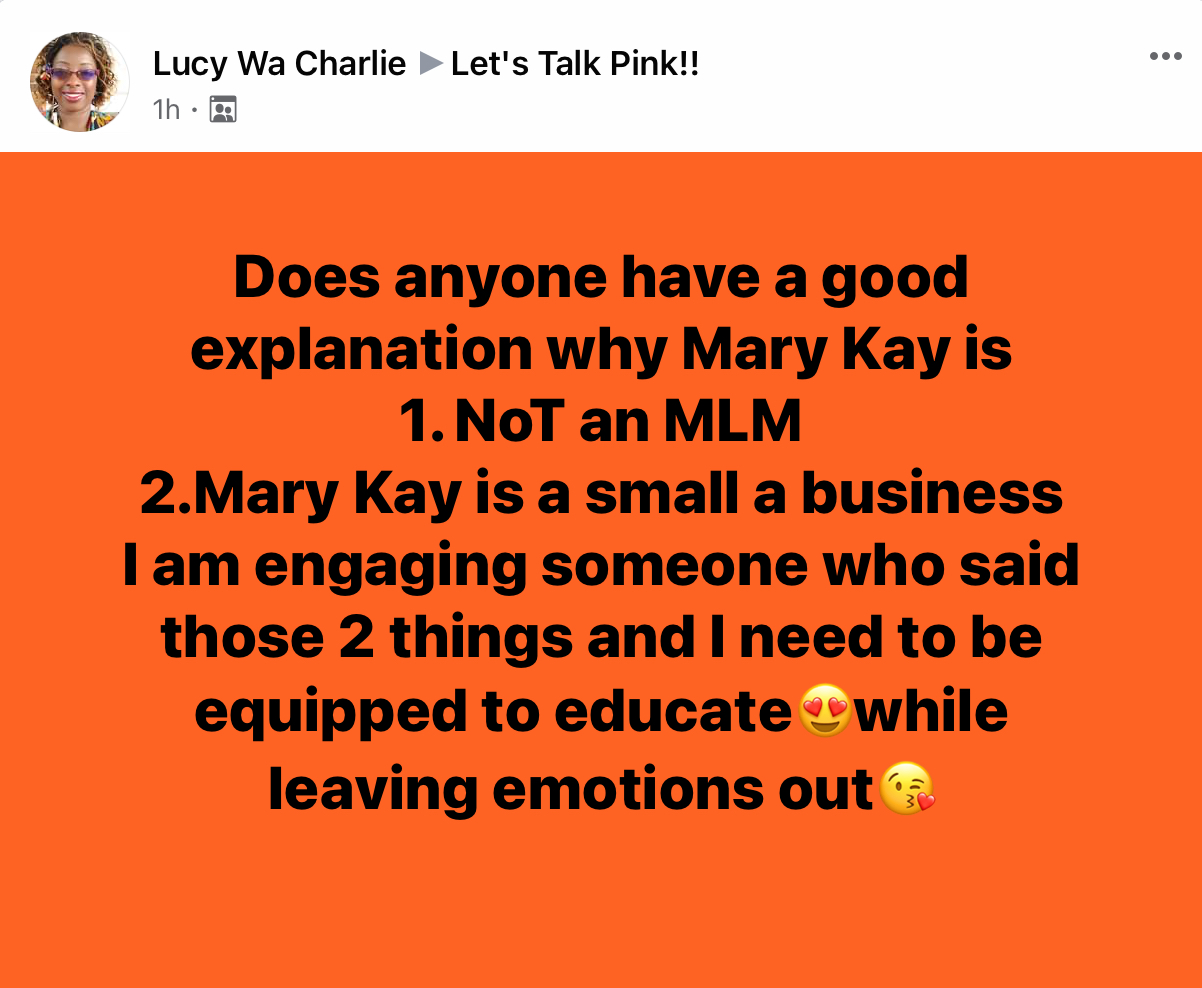The Myth of “Product Sales” in MLM
 A common tactic of multi-level marketing companies is hiding behind “product sales,” convincing potential recruits that significant retailing of products occurs, while in reality money is made from recruiting new marks. Sure, some products are retailed to third party customers (rather than just distributors making purchases). But the amount of product that is sold to outside customers is very low. Nonetheless, MLMs tout “retail sales” figures by pretending that all purchases of products by distributors are sold at full suggested retail.
A common tactic of multi-level marketing companies is hiding behind “product sales,” convincing potential recruits that significant retailing of products occurs, while in reality money is made from recruiting new marks. Sure, some products are retailed to third party customers (rather than just distributors making purchases). But the amount of product that is sold to outside customers is very low. Nonetheless, MLMs tout “retail sales” figures by pretending that all purchases of products by distributors are sold at full suggested retail.
MLM expert Robert FitzPatrick explains how it works in his paper The Myth of “Income Opportunity” in Multi-Level Marketing. This material is as relevant today, as when it was first written. MLM is a model that has been in place for decades… the scam continues just as it always did!
Put on the Camouflage of “Product Sales”
Though virtually none of the “sales representatives” ever earns a profit or has any “customers,” a pyramid scheme can be made to appear as a “sales company.” This is because each new recruit makes a purchase of products and the commissions are all based on the purchases of products by other recruits. There may be virtually no end-users, just a long chain of “distributors.” The few sales representatives that do earn a profit do so only from a continuous influx of newly recruited investors (other sales representatives/distributors). If the recruitment program ends, their income ceases.
Though the recruitment-based scheme is camouflaged to appear as a “sales” company, the classic elements of the pyramid scheme fraud are all present:
1. Multiple levels of investors to bring in more recruits;
2. Payments to gain and maintain a position on the chain;
3. Recruitment required to move up the chain where rewards are paid;
4. Early investors are paid directly from the newest recruits’ investments;
5. A structure that places the vast majority permanently at the bottom where no income is
possible;
6. Each succeeding level in the recruitment-based scheme must be larger than the one above, and the numbers of total participants must grow successively, e.g. five sales representatives recruit 25 who must recruit 125 who recruit 625, etc. until saturation.
Such a scheme can never stop recruiting. It can never stabilize since it has no true customer base. For as long as the scheme operates and expands, the opportunity for recruiting declines, thereby further reducing the opportunity for income. Profit in such a scheme is not true profit but only a transfer of money from the latest recruits to the earlier ones.
Yet, the laundering of money through product purchases can camouflage the entire operation as a “sales company” based on “products” – not fees. The product sales in a recruitment scheme are induced by the false promises of income tied to ongoing inventory purchases. No purchase may be required to join the scheme, but monthly purchases are required to “qualify” for the “unlimited income” opportunity.





 Visit the
Visit the
The products supposedly sold to actual customers are OVER PRICED. Companies charge the consultant 10X – 100X what they pay for manufacturers but expect the consultant to sell it at 2x the worth not counting they consultant has to take that profit after paying herself and buy more product.